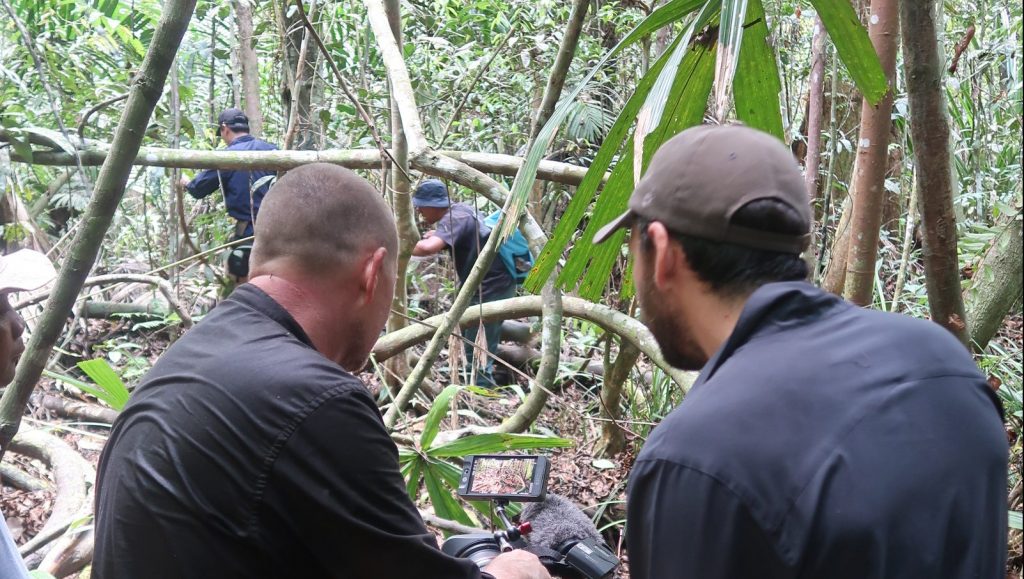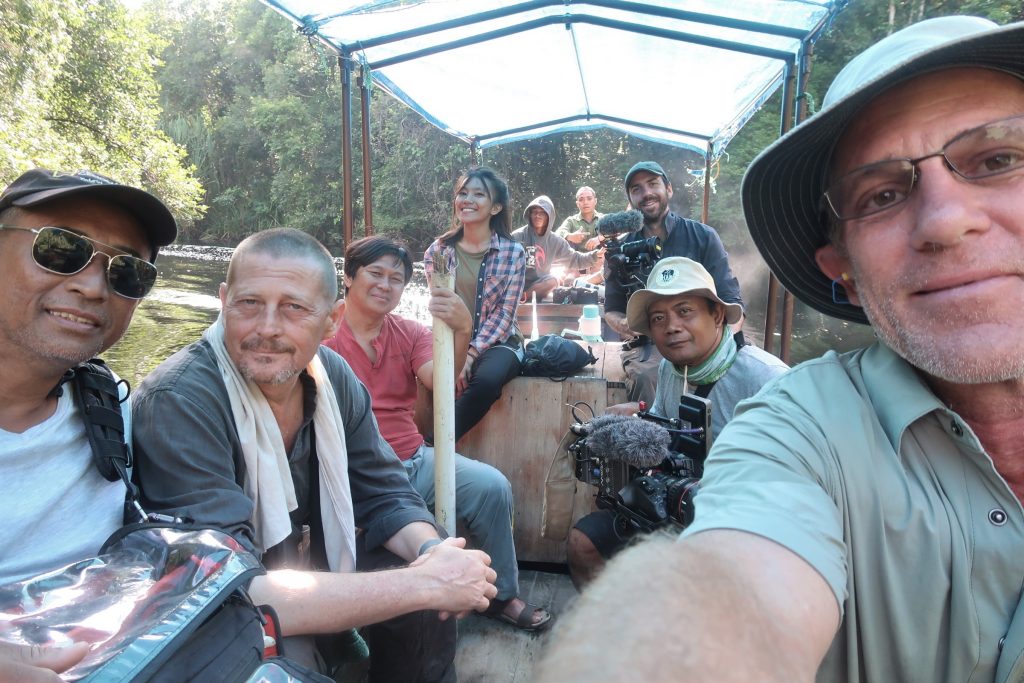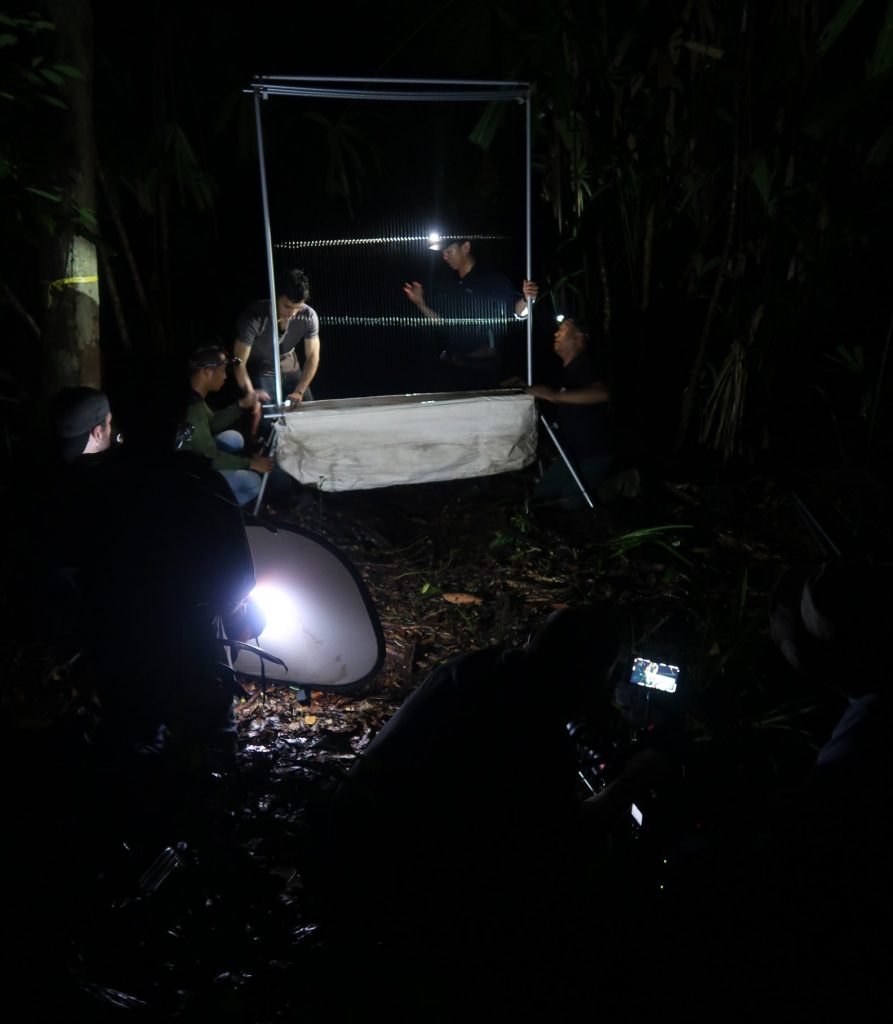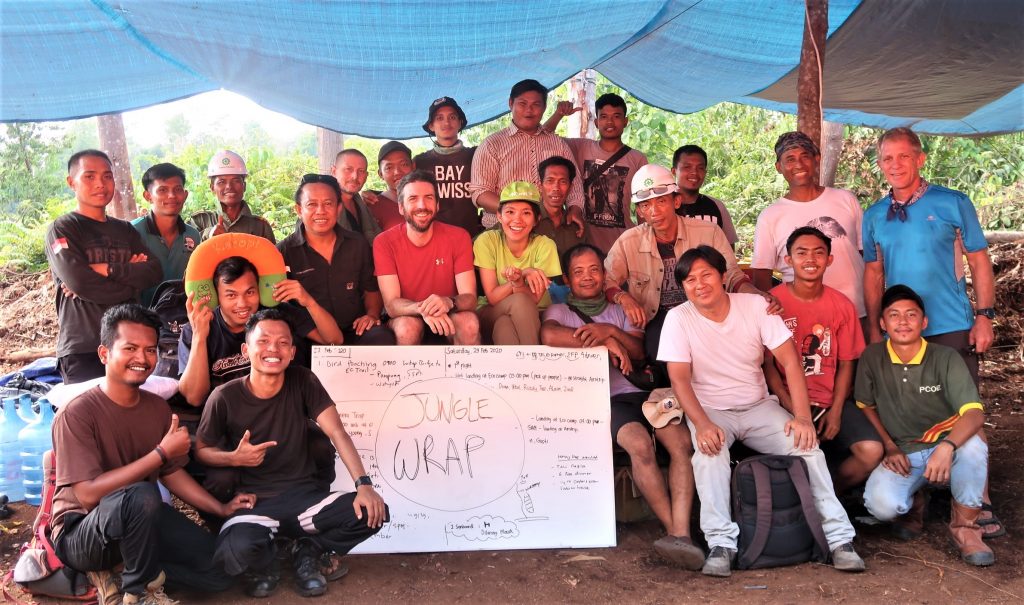Behind the scenes of Frontier Sumatra
Documentary producer Chris Baron brings us behind-the-scenes of Frontier Sumatra, the first documentary which gives viewers a peek into the stunning flora and fauna of the RER.
The cameraman hoists a 13kg video camera on his shoulder. Stepping over the tangle of tree roots and jungle debris, boots sinking into the soft peat, he sets up position to shoot a beautiful insect on a leaf in an untouched part of a Sumatran rainforest the world has never seen.
Around his shoes, the ants start to gather and bite, even as the sweat rolls down his face. The man holds still. He only brushes the ants off his legs when he was sure he has got the shot.

Cameraman Tim Deagle was an integral part of the crew from production company Beach House Pictures, who put together the documentary Frontier Sumatra, which will be screened on Discovery Asia Channel on 20 September 2021. It is a loving hour-long showcase of a 150,000 hectare jungle twice the size of Singapore called the Restorasi Ekosistem Riau (RER) located on Sumatra’s eastern coastline, which is being conserved by the APRIL Group, a pulp and paper manufacturer.
Said the documentary director Chris Baron, “On the surface, the documentary shows off the amazing conservation work done in the RER, and its incredible biodiversity.

“But the deeper purpose is to show that conservation is a costly and tricky endeavour. Frontier Sumatra shows that companies can be innovative in the way they approach this, and explore new models to become part of the conservation movement.”
In the case of RER , APRIL chose to protect it, hiring rangers and scientists to work with the local community and international groups to study, understand and conserve the rainforest.
Shooting Work
Most of the shooting for the documentary was conducted over a month in February 2020, just as the Covid-19 pandemic was starting to rear its ugly head. “By the time I arrived at the RER, on what was one of the last flights to Indonesia out of Singapore, it already had stringent lockdown protocols. We were quite happy to be there, in the forest, in contact with no one else, it was the safest place to be!” said Chris.
The documentary does not just include footage from the video cameras, it is also supplemented with panoramic drone shots, thrilling “point of view” footage from body cameras, and existing footage from the RER camera traps. The story of a possible sighting of a rare Sumatran Tiger, for instance, was told through camera trap footage.

Largely divided into sections which address issues like illegal poaching and burning, the documentary is peppered with interviews with the people who guard and protect the RER and how they do it. For instance, RER rangers are shown seeking out audio recordings of bird calls hidden in trees by poachers, which lure the birds to traps smeared with a mixture of rat glue and adhesive. They remove these traps.
Going the Distance
The shoot was a challenging one.
Chris, who has over 10 years of experience as a documentary producer, shared that jungle shoots are usually the “harshest, most difficult and tiring” because of the forest density. For Frontier Sumatra, the team had to grapple with rain, difficult terrain, and having to hack their way through untouched forest while carrying heavy equipment.
One portion of the documentary shows the crew jumping from a helicopter which was hovering a metre above ground, passing their equipment along, as the pilot deemed that the soft ground was too dangerous to land on. The area, called PT GAN, had never been explored and what the team unearthed there was a small woolly bat, one of the smallest bat species in the world, and the Asian Giant Hornet, the largest hornet species on Earth.
Even travelling down the river could be perilous, as the quick-growing pandan plants, full of thorns and spikes, could obstruct the boat’s passage. The crew would use parangs and chainsaws to cut through the pandan leaves while insects rained down on them.
Chris shared another anecdote where a team of about 25 crew were trying to get footage of people from the local community climbing trees to extract honey from beehives which were 30-40m high, at night. “What people watching the documentary would not see is that the bees are very, very aggressive. When you remove honey, they regard you as a predator. They are also drawn to the light from the head torches so we could not even turn these on.”
But he also recounts special moments, when the team, all hot and sweaty, would jump into the refreshing Serkap River after a day of filming. “The water in the river is clean and is the colour of really rich tea because of the tannin in it. It was so beautifully cool and fresh, its just a simple joy. We would use our torches to check if there were crocodiles in the water before jumping in!”
At the end of the day, Chris marvels at the life that was teeming in the RER and which he experienced first-hand.

He reflected, “It is amazing to be in a place that just surrounds you with so much life. Even when you sleep in your hammock, you are surrounded by the noise of the forest. It is wonderful that these places still exist, and I am proud that the documentary we have done will help to further efforts to protect these areas, which are disappearing very quickly.”